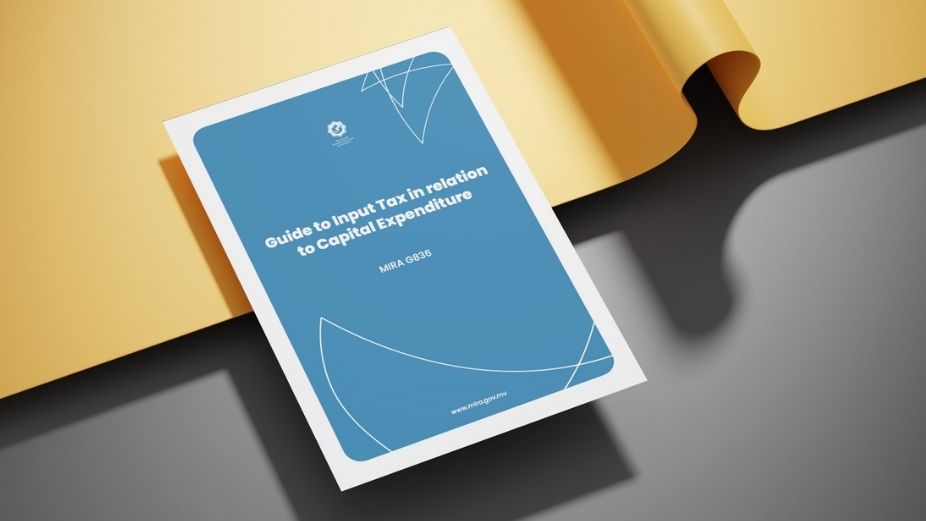
The Maldives Inland Revenue Authority (MIRA) has issued a new guide to clarify how registered businesses can claim input tax under the Goods and Services Tax (GST) regime when capital expenditure (CAPEX) is involved. The guide introduces detailed procedures based on the size and nature of the expenditure, setting a clear distinction between capital spending above and below MVR 500,000.
According to the guide, capital expenditure is defined in accordance with international accounting standards approved by the Commissioner General. If an expense qualifies as CAPEX under these standards, it must be treated accordingly for GST purposes.
One of the key thresholds is MVR 500,000. For CAPEX under this amount, businesses can claim the full input tax in the taxable period in which the expenditure is incurred, provided there is sufficient output tax from the associated taxable activity. Any unused input tax may be carried forward for 12 months.
In contrast, for CAPEX exceeding MVR 500,000, the input tax must be deducted in equal portions over a 36-month period. Businesses are required to begin this deduction only after the related taxable activity has started generating output tax. For example, construction costs for a resort cannot be claimed until the resort begins operations.
Importantly, input tax for CAPEX must be matched against the same taxable activity that generated the expense. Input tax incurred for one taxable activity cannot be claimed against another. The guide also includes provisions for cases where CAPEX supports both taxable and exempt supplies—in which case, businesses must apportion input tax accordingly.
MIRA highlights that any input tax in relation to CAPEX that remains unclaimed after the 12 or 36-month period can still be carried forward and deducted in subsequent periods, subject to output tax availability.
To claim input tax for capital expenditures, businesses must also submit an Information Sheet alongside their tax return. Failing to do so will render the claim invalid for that taxable period.
The guide features multiple worked examples—ranging from retail upgrades to large resort projects—to illustrate application in real business contexts. These examples help clarify how to navigate complex scenarios, such as shared-use properties, partial exemptions, or staggered project timelines.
MIRA notes that this guide reflects its current interpretation of the tax law and is designed to help GST-registered taxpayers stay compliant with the relevant legislation. The guide is available on MIRA’s website, and businesses are encouraged to seek clarification from the authority in case of uncertainty.













